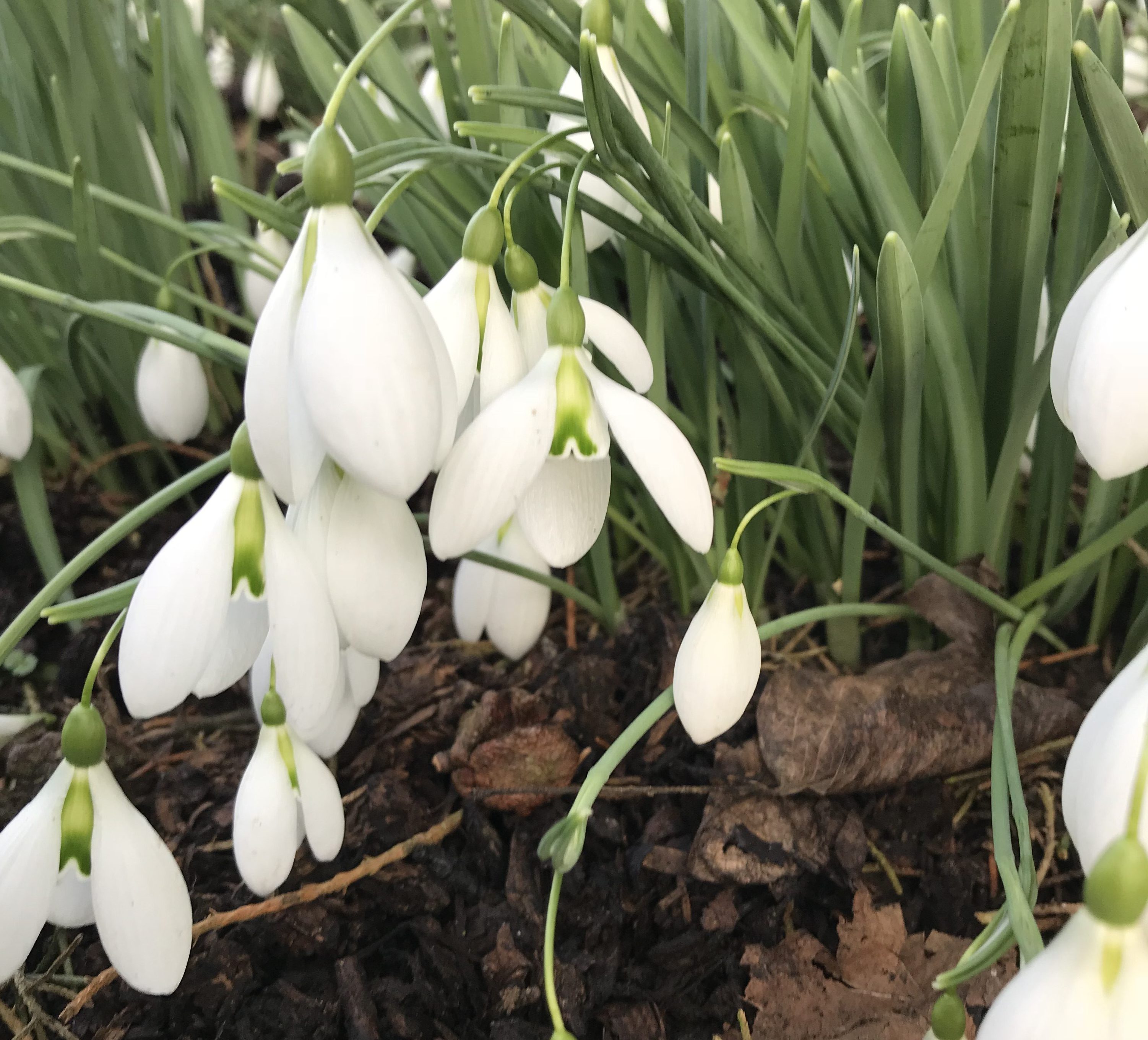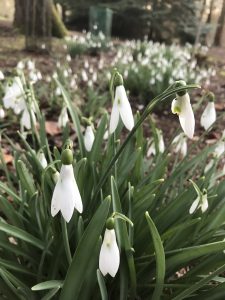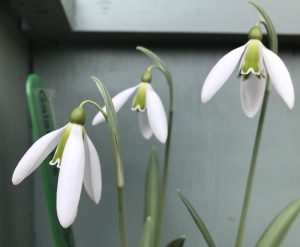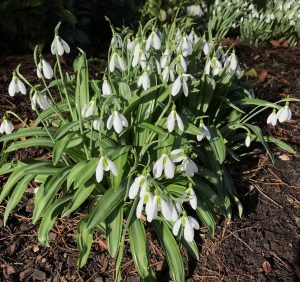Snowdrops – heralding an approaching spring

A really gratifying task at this time of year is working with snowdrops. Snowdrops (Galanthus) are a beautiful winter-flowering plant. My excitement bubbles up on seeing them because they feel also like the first heralds of an approaching spring. Other gardeners have commented to me in the past weeks of the relief they feel seeing snowdrops: it’s the first thrill of the growing season to come, of the changes which will be hitting as the garden lurches back into life and that work done in Autumn and Winter will now start to come to fruition.

Soon snowdrops will be widely available to buy in garden centres. Unlike most bulbs they are commonly sold “in the green”: after they have finished flowering, but while still in leaf. The bulbs have roots and leaves still attached and are sold clumped in a bag or bundle. This feels unusual as most bulbs are bought dry and leafless, and planted a season or so before flowering. The reason for this point of difference is that snowdrop bulbs without leaves dry out very easily and so “in the green” is a way of acquiring and planting snowdrops with less risk of them dying off. You can buy large quantities of standard species quite cheaply to populate your garden for next year.
If you aren’t going out to buy Snowdrops “in the green” you can also use the following methods to increase snowdrop numbers in your garden:
– In Winter, you can buy potted snowdrops which are in flower (see below for more on this).
– In Winter and Spring, you can divide your snowdrops as the clumps get congested. You can do this at any time after the snowdrop has started to sprout. They are resilient little plants. So you can lift a clump which are in bud, in flower or in leaf and split into smaller groups.
– In Autumn, you can buy bulbs and plant them – but you need to be sure you are buying ones in good condition, and that you can get them in the ground, or a pot, immediately.

Dividing is what I have been doing in recent weeks, when I have had a spare half hour around the garden. It is a quick and easy task, and the effect produced has been striking. Each clump – only 30cm or so across – could yield a hundred or so snowdrops as the bulbs multiply year on year. So, if you split these into clusters of about 5 bulbs, or even individually, the snowdrops in one clump can be used to cover an area of a couple of metres square, or to form several new clumps around the garden.
Snowdrops are versatile and work well in an informal or formal setting. The trick in a garden, as opposed to woodland or countryside, is to position your snowdrops where they will be seen. In Winter, you are more likely to pass through your garden on paths, rather than linger on lawns or sit out by the house. So arrange your snowdrops where they are in full view from paths and entrances, rather then tucking them away in areas where you might not go until the weather is nicer. Plant them around path edges or on raised areas, where you will really be able to notice them and see the delicate flowers. You can plant them in natural looking clusters, or, because snowdrops are a neat and compact plant, they can also work well in formal arrangements, in pots or lines along the edge of beds. In the right spot, they can give an exceptional amount of impact and pleasure, despite their diminutive size.

A trip to a specialist nursery will reveal a huge range of snowdrops which you may not be familiar with. The small, grey-green leaved plant with single flowers which we usually see in woodland is Galanthus nivalis. There is a “double” form of this called Galanthus ‘Flore Pleno’ (Galanthus nivalis f. pleniflorus ‘Flore Pleno’), where the inner green and white petals have formed a rosette-like flower. However there are many more species, forms and cultivars, all with differing heights, leaves, petal shapes, and markings, some of which are rare and valuable. These snowdrops will often be the ones potted up individually and sold in flower – so you can see what you are buying. You can also buy specialist snowdrops online or in catalogues from suppliers (such as Avon Bulbs who do a good selection). The price might surprise you as much as the variety, as specialist snowdrops will be priced per bulb, from around £5, up to several hundred pounds for rarer ones. The cover photo for this post shows Galanthus ‘John Gray’,which costs around £10 per bulb.

If you do want to include a few larger size snowdrops for contrast in your garden, then you may want to consider buying more common taller snowdrops, such as ’S. Arnott’ or ‘Magnet’, or Galanthus woronowii, which has broad, bright green leaves. Some, such as S. Arnott, also have a pleasant scent.

I was lucky enough to get out to a Snowdrop Day at Thenford Arboretum last week and stroll through mass plantings, clumps and pot specimens of a varied collection of snowdrops, which left me quite inspired. I’m thinking of gradually building patches of some different snowdrops around the garden. And I’m looking forward to the next couple of weeks of more snowdrop spotting.